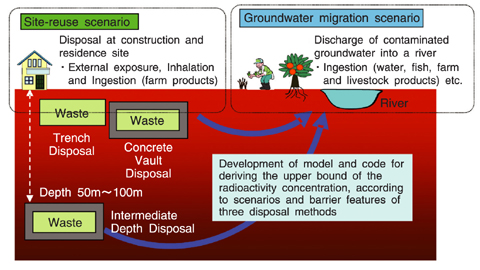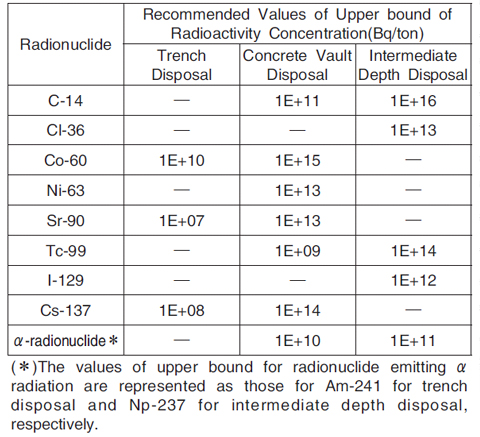
Fig.5-16 Scenarios and exposure pathways used to derive upper bound of radioactivity concentration in disposal
Table5-1 Recommended values of upper bound of radioactivity concentration for 3 disposal methods

The upper bound of radioactivity concentration during disposal means the maximum concentration of radionuclides of waste repository allowable in a license application for that repository. In Japan, there are three concepts for methods of disposing of low-level waste categories: near surface disposal without an artificial barrier (trench disposal), near surface disposal with an artificial barrier (concrete vault disposal), and intermediate depth disposal. The Nuclear Reactor Regulation Law has not been amended to set the upper bound of the radioactivity concentration for each of these disposal methods of transuranium (TRU) wastes. We developed an assessment code (GSA-GCL ver. 2) to derive the upper bound of radioactivity concentration for TRU wastes, according to geological and artificial barrier features in three disposal concepts. This code supports the dose estimation for the exposure pathways in two typical scenarios: (a) the site is a residential area and (b) the groundwater from the site is discharged into a river (Fig.5-16). We specified important radionuclides and their dose levels based on calculations using our code, setting appropriate geological and artificial barrier conditions for each disposal method. These dose estimations were adopted in the report published by the Nuclear Safety Commission (NSC); "Upper Bounds of Radioactive Concentration in Burial of Low-Level Radioactive Solid Waste (in Japanese), May 2007". In this report, the NSC recommended upper bound values considering both ease of measurement of the radioactivity concentration and the variation in concentration of radioactive waste to be disposed of (Table5-1). Their recommended values were prescribed by ordinance of Ministry of Economy, Trade and Industry in 2008. This work was performed by JAEA under contract with Nuclear and Industrial Safety Agency in Ministry of Economy, Trade and Industry.